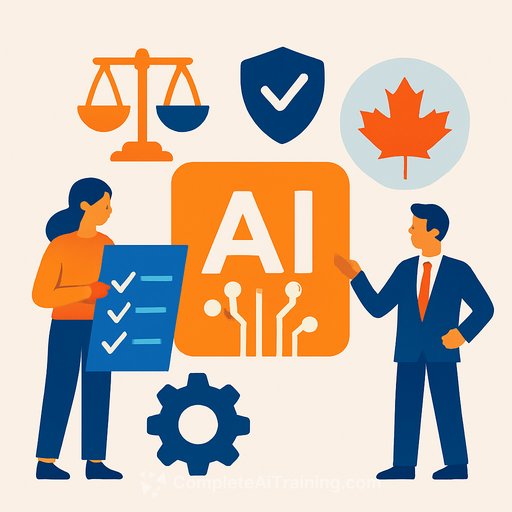Voluntary Standards for Responsible AI Governance
As AI becomes more integrated into Canadian organizations, there’s a growing need to balance AI’s innovative potential with expectations for ethical use. Governments, regulators, and standards bodies are developing legislation and voluntary guidelines to help organizations manage AI responsibly. Alongside the Canadian government’s Voluntary Code of Conduct on Advanced Generative AI Systems, two key voluntary standards stand out: ISO/IEC 42001:2023 and the NIST AI Risk Management Framework.
ISO/IEC 42001:2023 – A Framework for AI Governance
ISO/IEC 42001 is an international standard that provides a structured approach for organizations to govern AI projects, models, and data practices. It’s designed for organizations of all sizes, including non-profits, focusing on managing AI risks and opportunities across various applications.
The framework follows the plan-do-check-act cycle to help organizations implement, monitor, and improve their AI systems continuously. Its core pillars include:
- Responsible AI: Ensuring ethical use through strong governance and regulatory compliance.
- Reputation Management: Building trust with stakeholders via transparency, fairness, and accountability.
- AI Governance: Defining clear roles and responsibilities to meet legal and regulatory demands.
- Practical Guidance: Addressing AI risks like bias, data protection, and transparency.
- Identifying Opportunity: Encouraging innovation within a controlled framework through audits and performance reviews.
ISO also offers other relevant AI standards, such as:
- ISO 23053 – Framework for describing generic AI systems
- ISO 23894 – Guidance on AI risk management
- ISO 5339 – Guidance for AI applications
- ISO 24027 – Addressing bias in AI systems and AI-aided decisions
Achieving ISO 42001 certification signals that an organization has established the necessary governance to manage AI risks effectively. This certification can enhance stakeholder confidence by demonstrating a commitment to responsible AI and data privacy.
NIST AI Risk Management Framework
The National Institute of Standards and Technology (NIST) offers a voluntary AI Risk Management Framework designed to help organizations identify and manage AI risks. It supports trustworthy AI development and use across sectors and company sizes.
The framework consists of two parts:
- Part 1: Defines AI risks and approaches to maintain stakeholder trust through safe, transparent, and fair AI use.
- Part 2: Provides systems to control these risks through four stages:
- Map: Establish context and identify risks based on AI’s intended use, laws, and societal expectations.
- Measure: Assess and track risks using appropriate metrics.
- Manage: Prioritize and address risks using insights from mapping and measurement.
- Govern: Implement transparent policies and procedures to oversee risk management activities.
Many Canadian public sector entities require contractors to align with the NIST framework. Businesses working with federal or provincial governments should consider compliance to stay competitive and trustworthy.
Practical Considerations for Organizations
Organizations using AI should consider adopting one or more voluntary standards like ISO/IEC 42001 or the NIST framework. These standards help improve AI outcomes, strengthen risk management, and boost stakeholder confidence.
Additionally, following voluntary codes positions businesses well for future AI legislation and regulations. This proactive approach can safeguard your organization’s reputation and operational integrity.
For those interested in expanding their AI governance knowledge and skills, exploring specialized AI training options can be valuable. Visit Complete AI Training for courses tailored to different roles and expertise levels.
Note: This article provides general information and is not legal advice. Laws and regulations may change, and specific legal counsel should be consulted for individual situations.
Your membership also unlocks:






